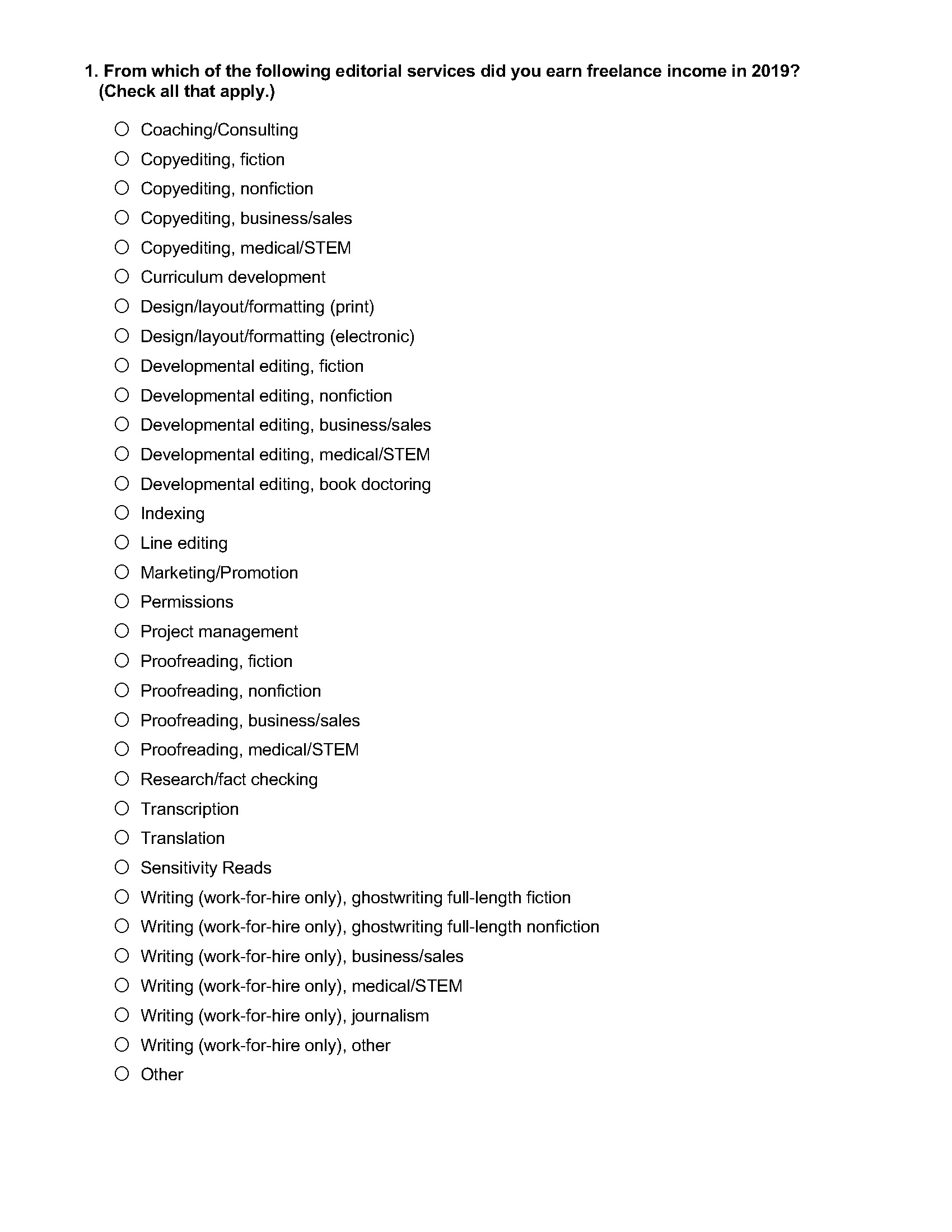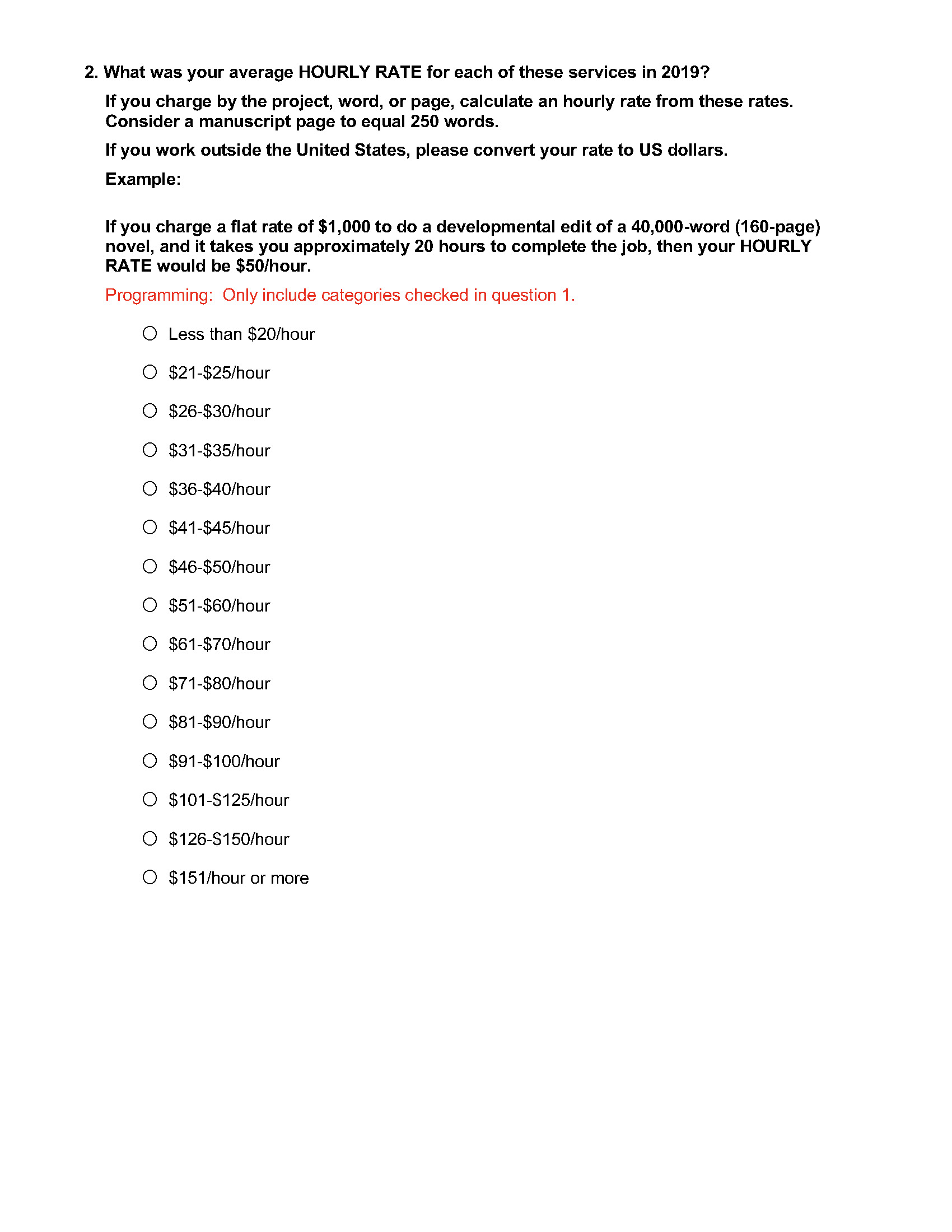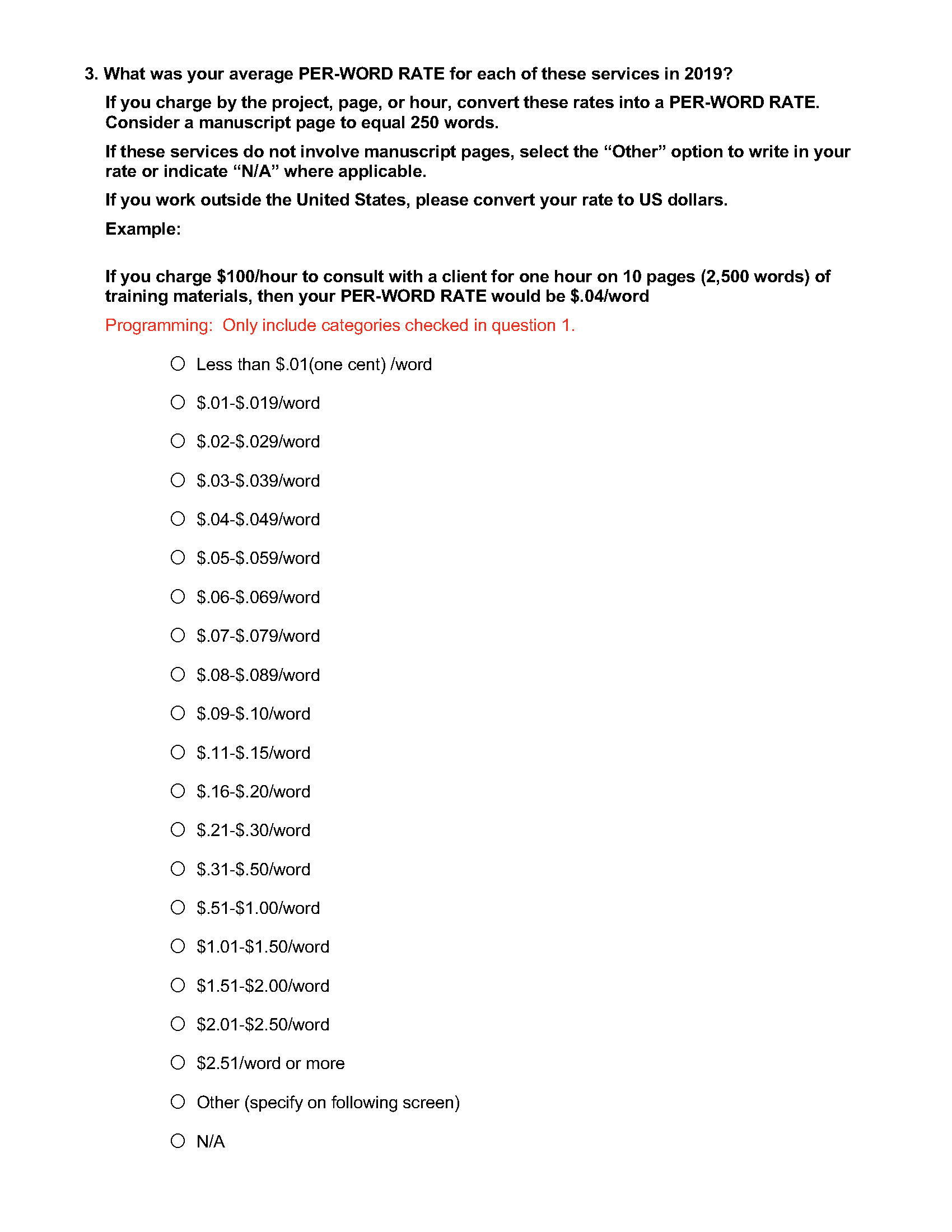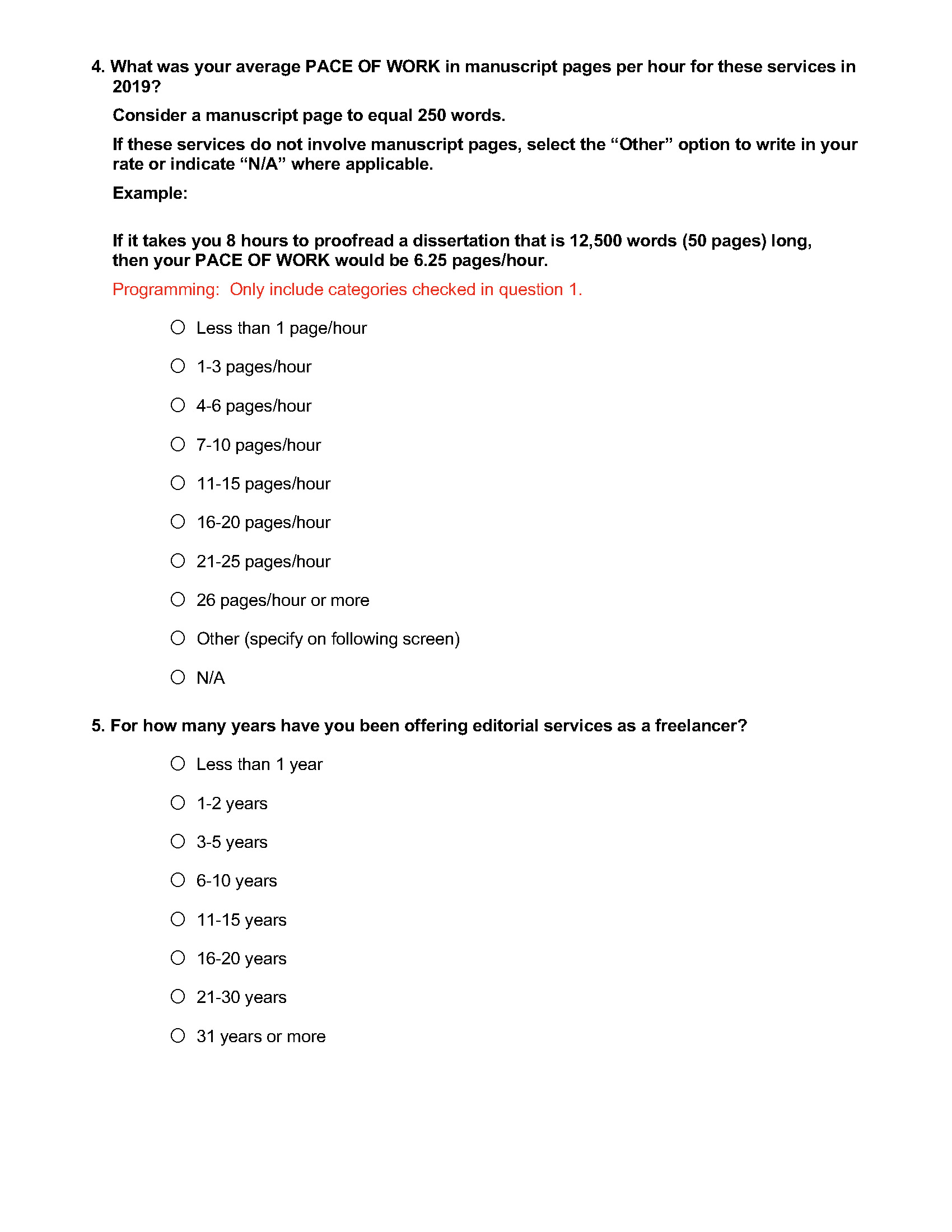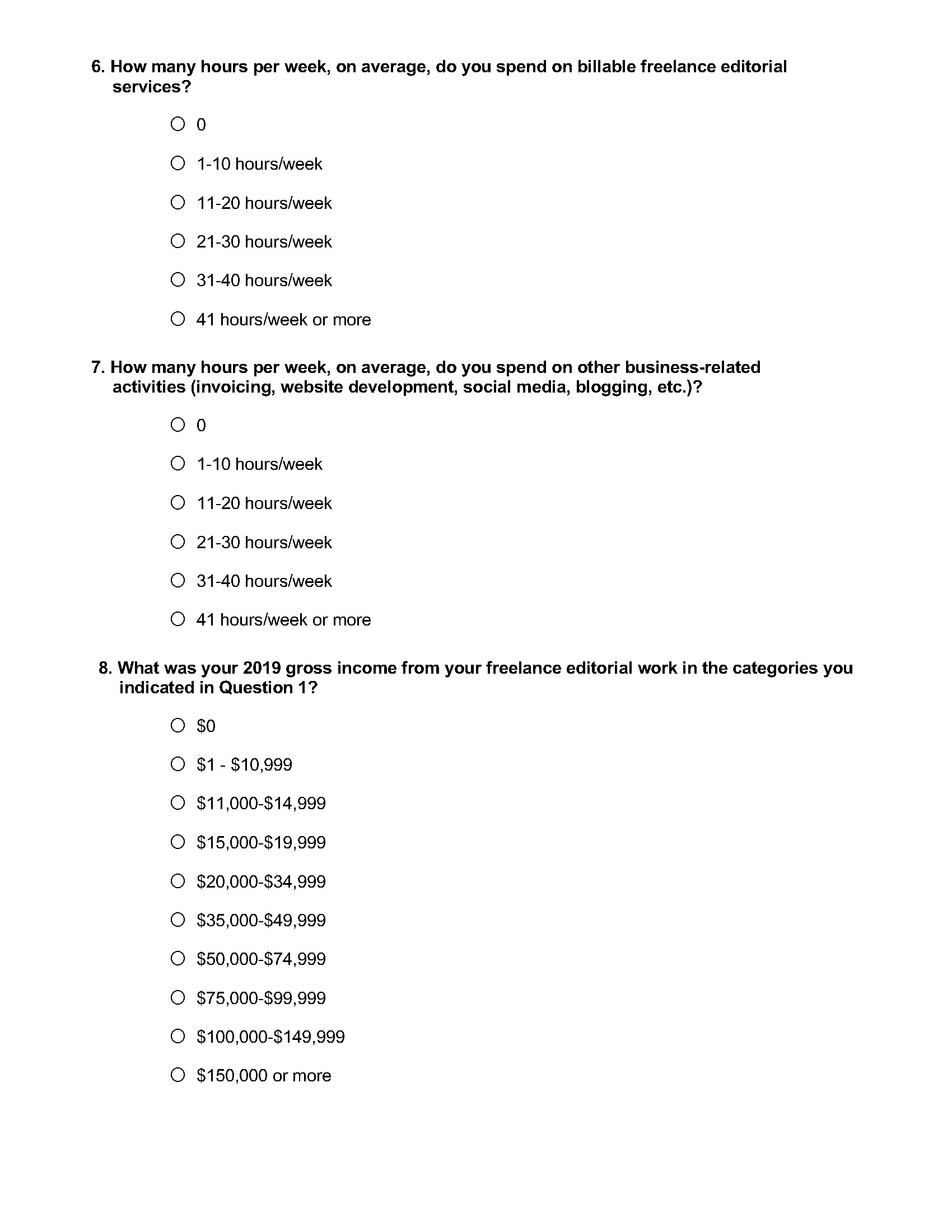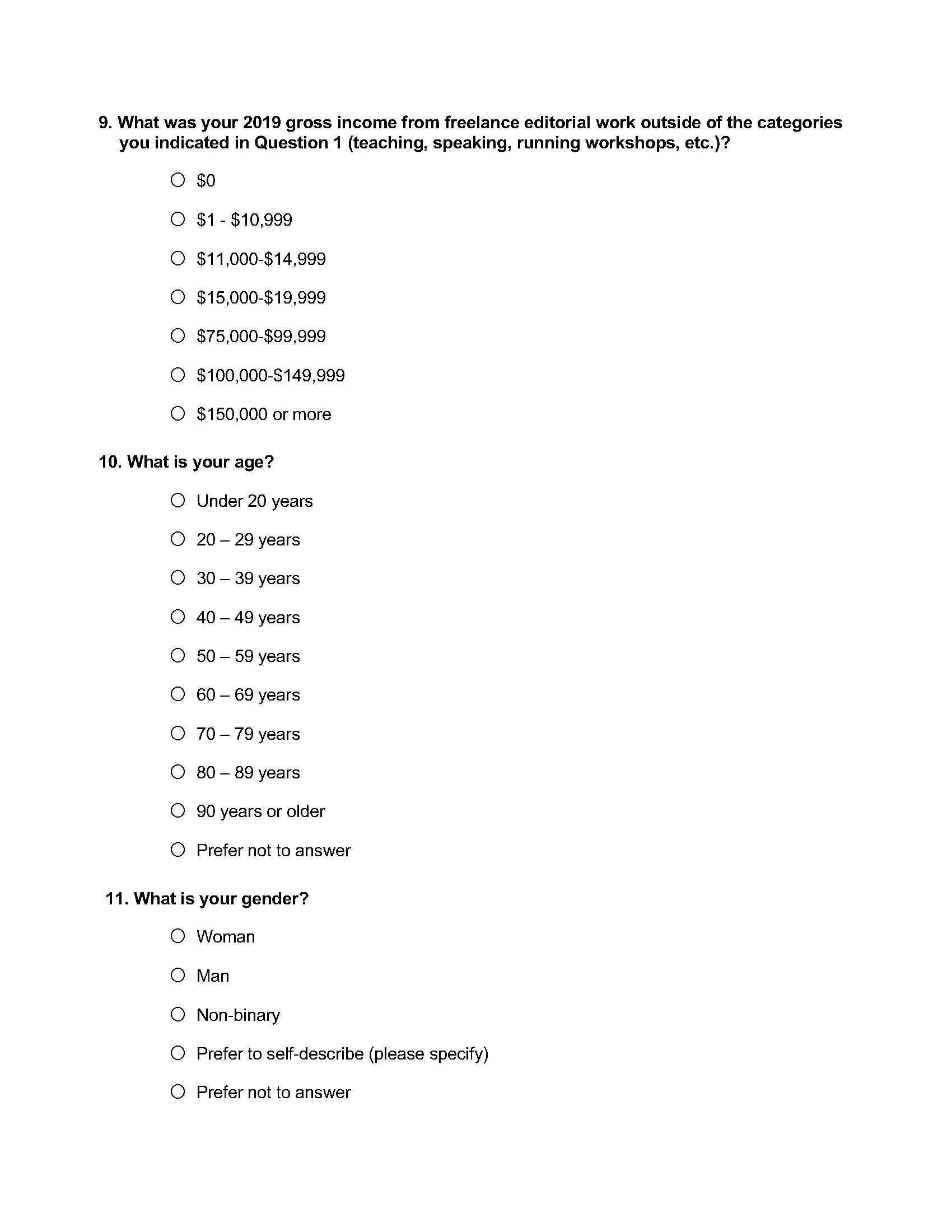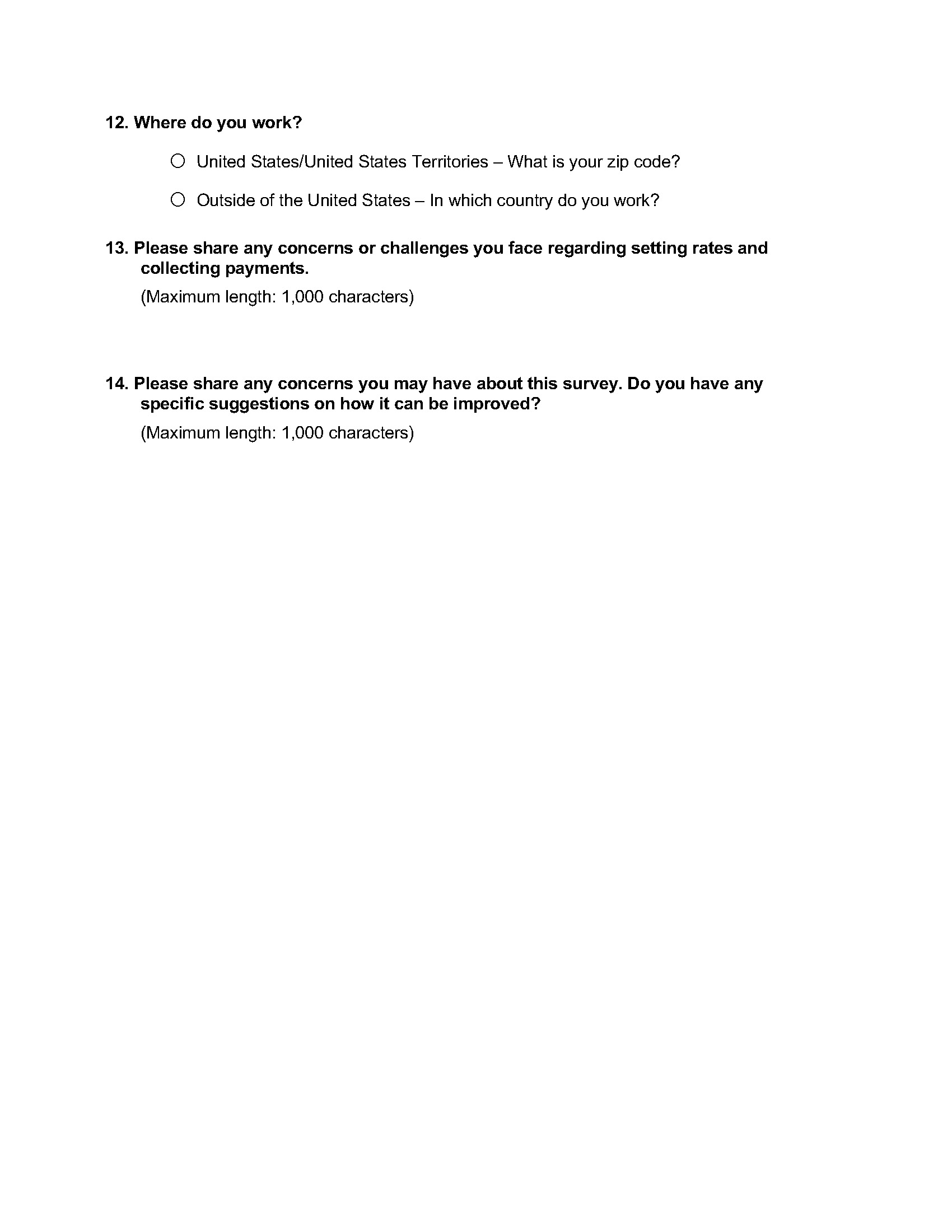2023 Rates Survey
The EFA editorial rates chart is viewed as an authority when it comes to defining the standard rates for editorial work. In order to ensure that the information presented in the chart reflects the industry as accurately as possible, beginning in 2023, the EFA will conduct an annual rates survey of our members.
The newly revised survey aims to be comprehensive in its scope, including eight major categories, dozens of subcategories, and plenty of opportunities to provide custom information. At the same time, we have designed the survey to be streamlined so you only be asked to provide rate information for the work types and services you engage in.
This will enhance both the experience of our members and the reliability of the data collected.
The 2023 EFA Rates Survey was closed on January 12, 2024.
Thank you in advance for your participation and for helping the EFA represent you and your work to the best extent possible. We truly appreciate your playing an active role in ensuring the EFA editorial rates chart remains current. Your contribution will help keep the organization strong and vital!
Rates Survey FAQ
Click here to see the email that went out to EFA members in April 2020 as their invitation to take the survey.
Rates Survey Report
As an association, the EFA neither sets rates nor advises members on what rates or rate structures they should choose. Individual members’ rates vary considerably depending on multiple factors, including the nature of the work, time frame of the assignment, degree of special expertise required, cost of living, and member’s experience and region of the country.
Members: Please keep in mind that the information on this page is for EFA members only. Do not share it with nonmembers.
Click here to read the Introduction to the survey results.

Venture Research Associates
Survey Objectives:
The purpose of this study is to collect data from Editorial Freelancers Association members about the rates they charge for various editorial projects. The results of the survey will be used to update the Association’s rates chart, a reference widely used by clients, members and other freelancers.
Methodology:
On April 1, 2020, an email invitation to participate in the online survey was sent to 2,742 EFA members. Several reminder emails were sent to non-respondents to help increase response. The survey closed on April 30, 2020. A total of 576 members completed the survey. Accounting for 32 undeliverable emails, the response rate for this survey is 21%. The margin of error for this response rate and sample size is +/- 3% at the 95% confidence level.
The questionnaire was developed jointly by the Editorial Freelancers Association and Venture Research Associates, Westfield, NJ. The survey was fielded by the EFA and results were collected and tabulated by Research Results in Fitchburg, MA. Analysis was provided by Venture Research Associates.
Respondent Profile:
- 86% of EFA members are women and 11% are men. 1% are non-binary and less than 1% prefer to self-describe. 2% chose not to answer the question.
- The average age for EFA members is 53 years and they have been offering freelance editorial services for an average of 11 years.
- 96% of EFA members are located across all regions of United States/U.S. territories and 4% are outside the U.S. Among those working in the U.S., 26% are in the Mountain/Pacific States, 26% are in the South Atlantic/South Central States, 23% are in the Mid-Atlantic States, 13% are in the Midwest and 12% are in New England.
- Median income for freelance editorial services in 2019 was $25,974. 20% earned less than $11,000 from other activities such as teaching, speaking or running workshops, while three-fourths report that freelance editorial work was their only source of income in 2019.
2019 Editorial Freelance Projects
EFA members earned income from a wide range of editorial projects in 2019. Topping the list was copyediting, nonfiction, mentioned by 67% of respondents. 52% earned income from line editing, and more than one-third earned income from proofreading, nonfiction (38%); copyediting, fiction (37%); and developmental editing, nonfiction (36%).
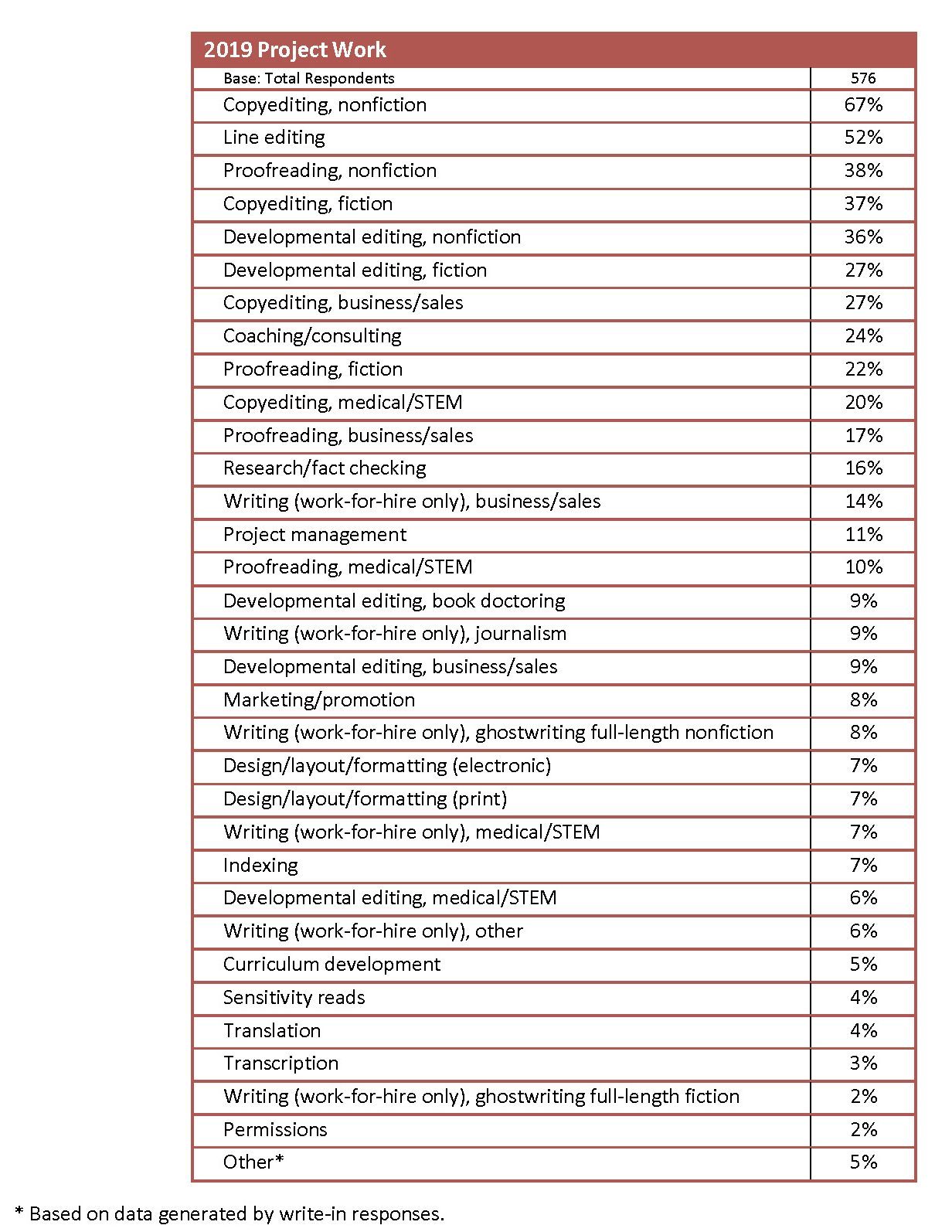
Collection of the Rates Data
- Survey respondents were asked to share their hourly and per-word rates, as well as their pace of work (pages per hour) for each of the editorial projects from which they generated income in 2019.
- If respondents charged by the project, they were asked to convert their project rate to an hourly rate and a per-word rate, and calculate pages per hour. For the purposes of this survey, they were asked to consider a manuscript page to equal 250 words.
- International respondents were asked to convert their rates to U.S. dollars.
- Respondents were given a link to an online document they could use to calculate and convert rates. They were also provided with rates conversion examples as a reference.
- Example 1: You charge $1,000 to do a developmental edit of a 40,000-word (160-page) novel, and it takes you approximately 20 hours to complete the job. Your HOURLY rate is $50/hour, your PER-WORD rate is $.025 (2.5 cents)/word, and your PACE OF WORK is 8 pages/hour.
- Example 2: You charge $100/hour to consult with a client on 10 pages (2,500 words) of training materials for a total of one hour. Your PER-WORD rate is $.04 (4 cents)/word. Your PACE OF WORK is 10 pages/hour.
- Example 3: You charge $.05 (5 cents)/word to proofread a 50-page dissertation (12,500 words), and it takes you a little over 8 hours to complete the job. Your PACE OF WORK is 6.25 pages/hour. Your HOURLY rate is about $78/hour.
- When asked to provide per-word rates and pace of work, respondents were given the option to answer “other” or non-applicable, for projects that did not involve manuscript pages. However, in most cases respondents provided a response.
- Median ranges for each editorial project are provided in the complete rates chart below.
EFA Rates Chart
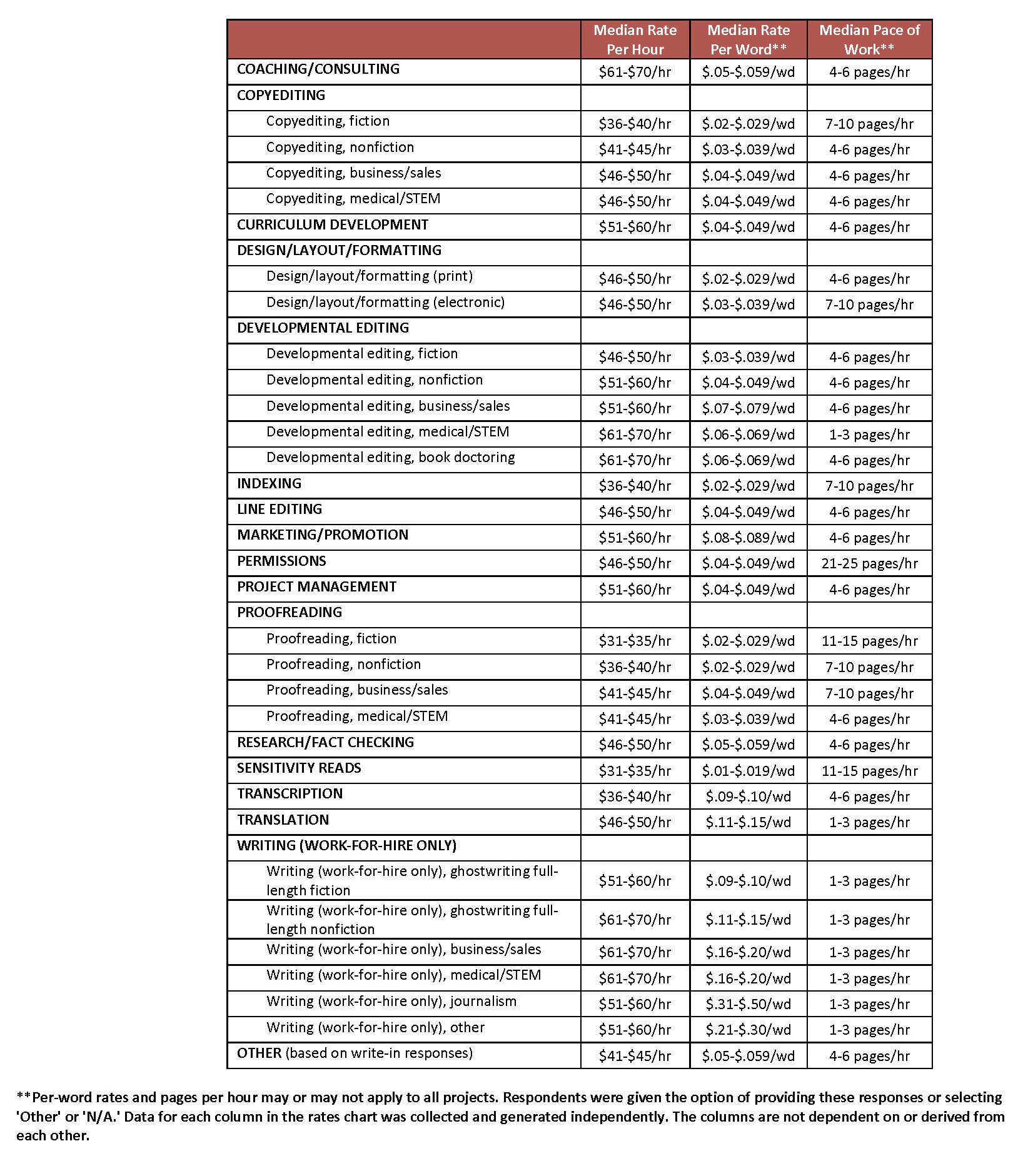
2019 Time Spent and Income Earned
- EFA members spend an average of 20 hours per week on billable freelance editorial services and 6 hours weekly on business-related activities (invoicing, website development, social media, blogging, etc.).
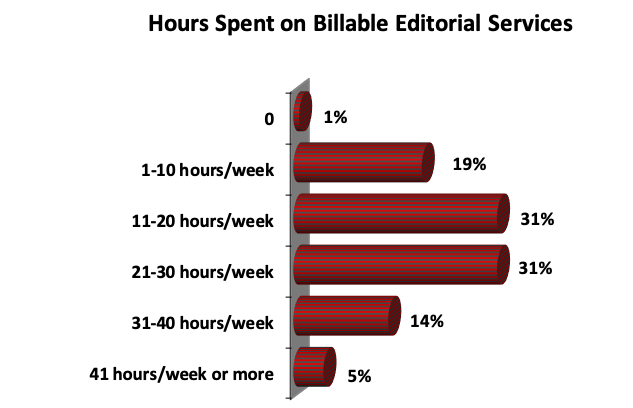
Median: 20 hrs/wk

Median: 6 hrs/wk
- Median income for freelance editorial services in 2019 was $25,974. 20% earned less than $11,000 from other activities such as teaching, speaking or running workshops. Three-fourths report that freelance editorial work was their only source of income in 2019.
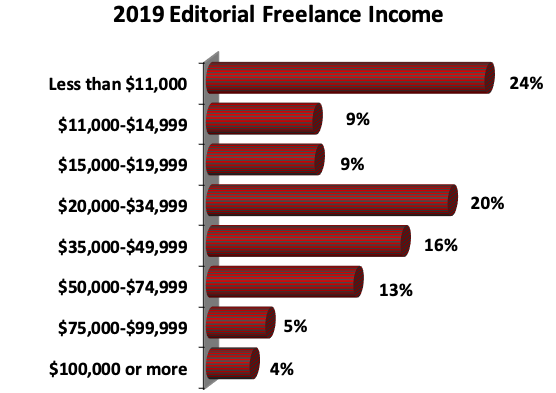
Median: $25,974
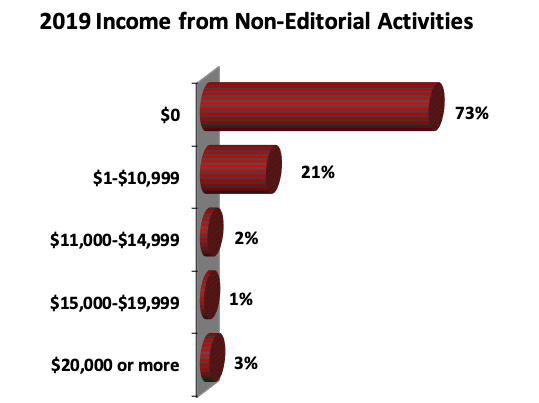
Base: 576 total respondents
Respondent Profile
- 86% of EFA members are women and 11% are men. 1% are non-binary and less than 1% prefer to self-describe. 2% chose not to answer the question.
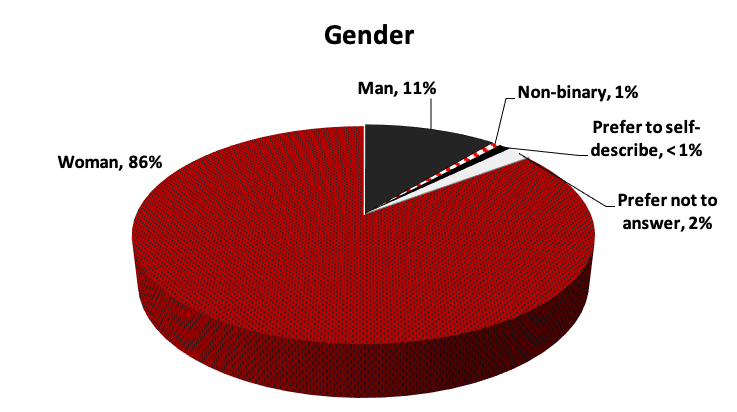
- The average age for EFA members is 53 years and they have been offering freelance editorial services for an average of 11 years.
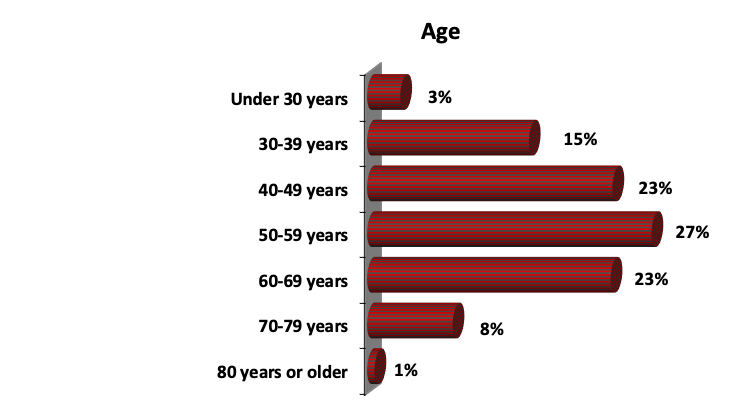
Median: 53 years
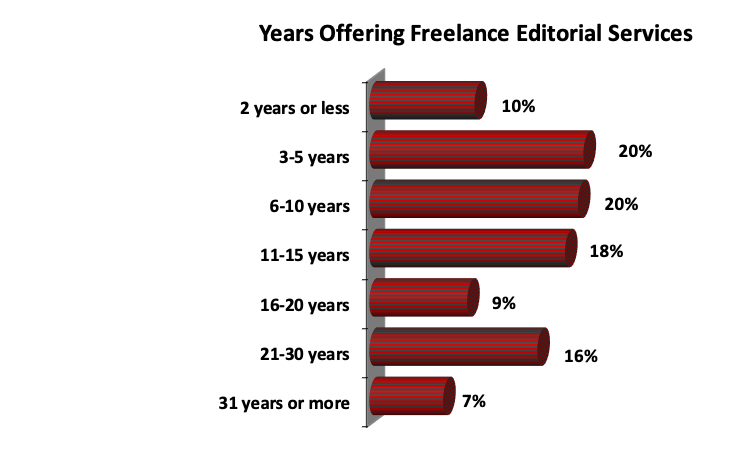
Median: 11 years
Base: 576 total respondents
- 96% of EFA members are located across all regions of the United States/U.S. territories and 4% are outside of the U.S. Among those working in the U.S., 26% are in the Mountain/Pacific States, 26% are in the South Atlantic/South Central States, 23% are in the Mid-Atlantic States, 13% are in the Midwest and 12% are in New England.
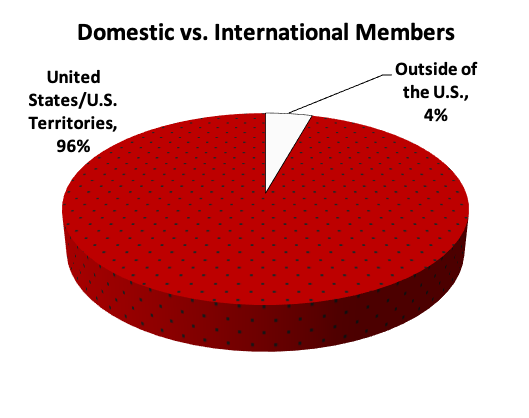
Base: 576 total respondents
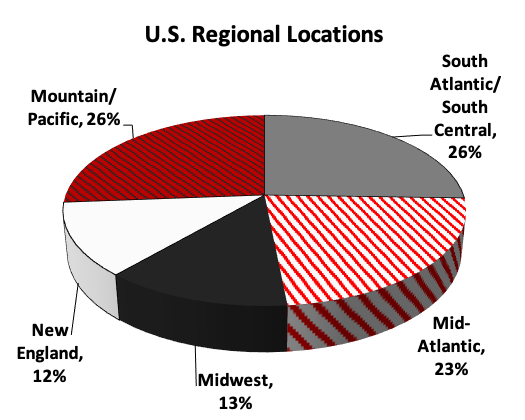
Base: 549 respondents in U.S./U.S. territories
